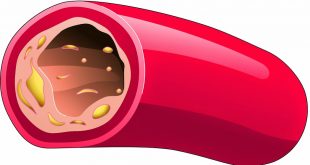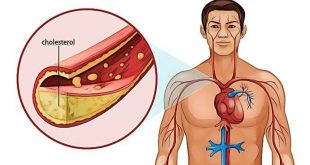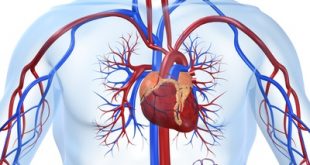What Is Relationship Between Hypertension And Stroke?
High blood pressure causes stress to the inner wall of blood vessels. This leads to damages and may cause the following to occur:
-
Small blood vessels that supply blood to the brain to close-off.
-
Blood clots to form and reduce or block-off blood supply to the brain.
-
The bursting of small blood vessels that may cause bleeding in the brain, therefore cutting-off blood supply.
Stroke occurs when there is a disruption of blood supply to any part of the brain. Stroke may be either dry (ischemic stroke) or wet (bleeding stroke).
The relationship between hypertension and stroke can be viewed in 3 categories:
-
Hypertension before a stroke
-
Hypertension during a stroke
-
Hypertension after a stroke
Hypertension Before A Stroke
Prevention is better than cure!
High blood pressure is a major risk-factor for both dry (ischaemic stroke) and wet stroke (haemorhagic stroke). The stroke event risk increases in proportion with both the upper reading of blood pressure (systolic) as well as the lower reading (diastolic).
Stroke risk is also elevated in elderly with higher systolic blood pressure even though the diastolic blood pressure remains normal. The risk increases when the systolic blood pressure is more than 140 mmHg.
Lowering blood pressure has been shown to reduce the risk of first-ever stroke event. Lowering systolic blood pressure by as little as 10 mmHg, reduces the risk of stroke by 1/3, irrespective of the initial blood pressure. It doesn’t matter how old you are. If you have hypertension, you need treatment.
Hypertension During A Stroke
When stroke happens, the brain will swell up due to the damage that has occurred. The pressure in the brain will increase as the brain swell in the rigid compartment within the skull. As a result, the blood supply to the brain will be jeopardized as the blood vessels are compressed.
In order to compensate, the blood pressure will be increased. Therefore, a high blood pressure during an event of stroke is not uncommon.
At this stage (usually within the first week of stroke), the blood pressure can be as high as 220 mmHg systolic and 120 mmHg diastolic. These may or may not be treated by your doctor depending on the condition. Higher blood pressure is desirable during the stroke event.
Do not be surprise if the doctor does not treat the high blood pressure during a stroke event. Do discuss with your doctor.
As the swelling of the brain reduce, so will be the blood pressure. Any high blood pressure after 1-2 weeks of stroke will require treatment (see below).
Hypertension After A Stroke
One of the most important goals after an event of stroke is to reduce the risk of another attack (recurrent stroke), by reducing the blood pressure after the acute period (1-2 weeks) of stroke.
The benefit of blood pressure control is seen in both dry and wet stroke. Just by controlling the blood pressure, you may reduce your risk of another stroke by 30-40%.
Is There Any Warning Before Stroke?
Remember! Hypertension is silent. There is no warning symptom.
Stroke can occur to anyone without any warning. Have your blood pressure regularly checked.
What Will You Feel During Stroke?
What you feel will rely on which parts of the blood supply to the brain is affected. The symptoms you feel are usually abrupt or occur within a short period of time. You may feel any of the following symptoms:
-
Weakness, numbness and/or clumsiness of the arm and/or leg (usually one sided)
-
Difficulty in speech (understanding or being understood)
-
Vision loss
-
Abnormal movement of the limbs
-
Sometimes sudden change in mood, memory and behaviour
Complication
Stroke causes catastrophic loss to one’s daily function. The loss may be serious or mild. Stroke is preventable. Treat hypertension as part of the risk reduction.
When Should I Seek Medical Advice?
Have regular check-up for your blood pressure.
Treatment And Prevention
Stroke is preventable. Hypertension can be treated with both lifestyle changes and medications. Lifestyle changes include appropriate diet and physical activities. Stop smoking!
There many types of medicines to help lower the blood pressure. Some may need more than 1 medicine to achieve blood pressure control. The main medicines that your doctor may prescribe for you include:
-
Diuretics (medication that helps with urination): for example hydrochlorothiazide or indapamide.
-
ACE inhibitors and ARBs : are often grouped together because they work in a similar nature. Examples of ACE inhibitors include perindopril, enalapril and captopril. Examples of ARBs include valsartan, telmisartan and ibersartan.
-
Calcium channel blockers: example includes amlodipine and felodipine.
References
- Basri, H., Chin, S.P., Looi, I., et al. (2011). Clinical Practice Guidelines: Management of Ischaemic stroke ( 2nd ed): Ministry of Health Malaysia.
- Heartfailurematters.org. (2007).Taking your own blood pressure and pulse. Available: http://www.heartfailurematters.org/EN/WhatCanYouDo/Pages/Takingyourownbloodpressureandpulse.aspx. Accessed 19 Sept 2012.
- Rahman, A.R., Bavanandan, S., Kamaruddin, A.S., et al. (2008). Clinical Practice Guidelines: Management f hypertension ( 3rd ed. 2008): Ministry of Health Malaysia.
- WebMD. (2012). High blood pressure and stroke. Available: http://www.webmd.com/hypertension-high-blood-pressure/guide/hypertension-high-blood-pressure-stroke. Accessed 21 Sept 2012.
- Wikipedia The Free Encyclopedia ( 2012). Antihypertensive drug. Available: http://en.wikipedia.org/wiki/Antihypertensive_drug. Accessed 21 Sept 2012
| Last Reviewed | : | 27 January 2014 |
| Writer | : | Dr. Cheah Wee Kooi |
| Accreditor | : | Dr. Irene Looi |
 PENDIDIKAN PESAKIT Kementerian Kesihatan Malaysia
PENDIDIKAN PESAKIT Kementerian Kesihatan Malaysia



